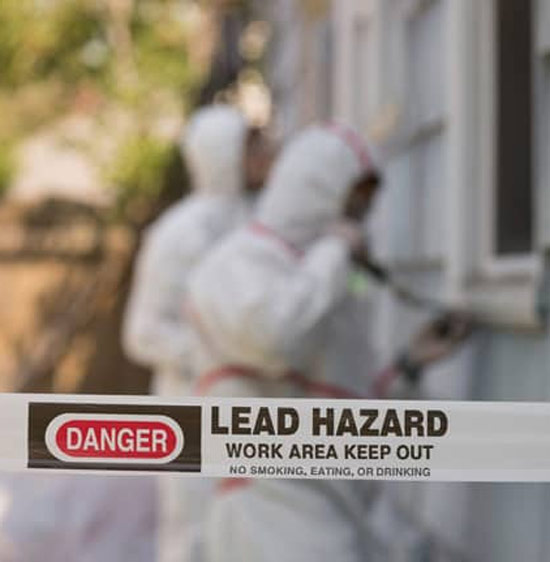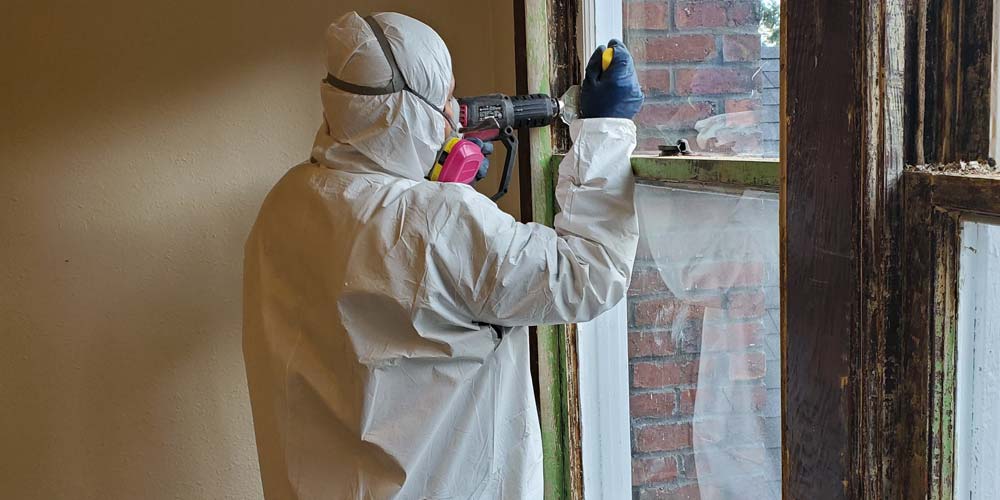Relied On Lead Paint Removal Company-- NYC's Premier Lead Abatement Service
Relied On Lead Paint Removal Company-- NYC's Premier Lead Abatement Service
Blog Article
Comprehensive Guide on Effective Lead Infraction Elimination Strategies
In the realm of environmental safety and security, addressing lead infractions requires a thorough and structured approach. This detailed guide begins by highlighting the important first steps of recognizing lead threats through sophisticated assessment and screening techniques. Methods such as XRF evaluation and dust wipe tasting are crucial in determining contamination resources. Moreover, the overview clarifies on the relevance of adhering to rigorous safety and security procedures during the elimination process, including the use of appropriate PPE and separating influenced areas (Lead Paint Removal Company). The succeeding sections promise to discuss post-removal verification and preventative strategies, guaranteeing long-lasting safety and compliance. Discover the detailed details that make these methods not simply efficient however essential.
Identifying Lead Dangers
Identifying lead hazards is a critical first action in mitigating the threats associated with lead exposure. Lead, a poisonous steel, can be existing in numerous ecological tools, consisting of paint, dirt, water, and dirt.
The initial phase in recognizing lead threats includes recognizing typical lead resources within the constructed environment. Structures built before 1978 are especially prone as a result of the widespread usage of lead-based paint throughout that duration. Additionally, dirt contamination can occur from deteriorating outside paint, commercial exhausts, or historical use of leaded gasoline.
One more considerable source is lead piping and pipes components, which can seep introduce alcohol consumption water. Durable goods such as playthings, porcelains, and imported products might additionally consist of hazardous lead levels. Especially, occupational settings and leisure activities entailing lead can track impurities into homes.
Evaluation and Testing
When dealing with lead hazards, efficient assessment and screening are paramount. This critical action guarantees the identification and metrology of lead existence, thereby directing succeeding removal efforts. First assessment commonly includes an aesthetic inspection to recognize prospective lead resources, such as deteriorating paint or contaminated dust. This is matched by more rigorous testing techniques to identify the degree of contamination.

Dust wipe sampling is an additional important method, particularly in residential settings. By accumulating samples from floors, windowsills, and other surfaces, this method provides understandings right into possible exposure dangers. Soil screening around building perimeters is important to find lead contamination that might position hazards, particularly to children.
Safe Removal Treatments
Upon completing complete assessment and testing, applying safe removal procedures is the next vital phase in dealing with lead hazards. This process ensures that lead-contaminated materials are properly and securely eliminated, lessening danger to both employees and locals. The very first step includes separating the afflicted area utilizing plastic sheet and proper securing methods to avoid the spread of lead dirt.
Workers need to don appropriate personal protective tools (PPE), consisting of respirators, gloves, and disposable coveralls, to mitigate direct exposure. Employing specialized tools and damp methods, such as damp sanding or utilizing HEPA-filtered vacuums, reduces the diffusion of lead bits. It is essential to avoid completely dry sanding or rough blowing up, as these techniques can create hazardous lead dirt.
Garbage disposal is an additional important component; all infected products must be securely landed and identified according to EPA and regional Web Site policies. In addition, comprehensive cleansing of the job area with HEPA vacuums and damp cleaning guarantees the elimination of recurring lead fragments.
Post-Removal Verification

Verification of successful lead elimination, recognized as post-removal confirmation, is essential to make sure the safety and habitability of the remediated location. This examination ensures that all well-known sources of lead have actually been resolved and that no noticeable indicators of contamination continue to be.
Complying with the visual assessment, ecological sampling is carried out. This entails gathering dust, soil, and in some cases water examples from the remediated area. Recognized laboratories evaluate these samples to gauge lead levels, guaranteeing they drop below the safety limits established by regulative bodies such as the Environmental Security Firm (EPA)
On top of that, air quality testing might be carried out to find airborne lead fragments, especially in situations where comprehensive lead-based paint removal or restoration has actually occurred. The results of these examinations provide measurable data validating that the lead levels are within acceptable limits.
Eventually, post-removal verification works as an important checkpoint, verifying the effectiveness of the lead reduction efforts and safeguarding the health of additional info occupants and site visitors.
Safety Nets and Maintenance

A key precautionary step includes making use of lead-safe certified contractors for any type of renovation, repair service, or paint tasks. These experts are learnt techniques that decrease lead dust and particles. In addition, maintaining painted surfaces to stay clear of chipping or peeling off is vital, as wearing away paint can launch lead particles into the environment.
Educational efforts targeting homeowner and occupants concerning the risks of lead and the value of reporting any kind of prospective hazards can further enhance preventative initiatives. Routine cleaning using HEPA vacuum cleaners and wet wiping methods can substantially lower lead dust build-up.
Final Thought
In summary, efficient lead offense elimination requires a careful strategy including extensive evaluation, accurate screening, and rigorous removal treatments. Making certain safety with proper seclusion and individual protective devices stays paramount. Post-removal verification using ecological sampling and air quality testing substantiates compliance with well-known safety and security requirements. Recurring examinations and upkeep are crucial to minimize future lead threats, thereby protecting public wellness and guaranteeing continual conformity with regulative demands.
Report this page